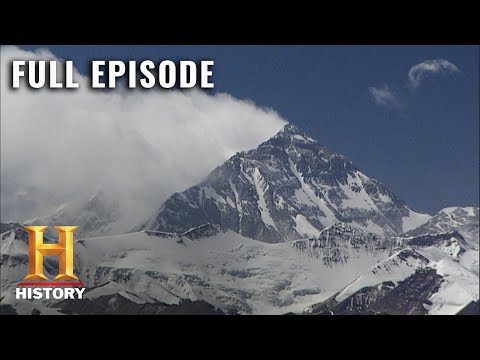
Mount Everest, a name synonymous with extreme heights, extreme conditions, and extraordinary human endeavor, dominates the landscape of Earth’s highest region. Towering at a staggering height of approximately 29,029 feet (8,848 meters) above sea level, it is the planet’s highest mountain. The documentary “How the Earth Was Made” by History channel offers an in-depth look into the geological and natural history of this majestic peak.
### Formation and Geological Significance
The formation of Mount Everest is a tale that spans millions of years. According to geologists featured in “How the Earth Was Made,” Everest is a product of tectonic movements. Approximately 50 million years ago, the Indian subcontinental plate collided with the Eurasian plate, resulting in massive crustal uplift. This ongoing tectonic activity continues to shape the region today, contributing to frequent earthquakes and the slow but steady rise of Everest’s height.
The rock at the summit of Everest is marine limestone, which suggests that this Himalayan giant was once under an ancient ocean. This revelation underscores how dynamic our planet is—a place where today’s mountain peaks were once seafloors.
### Climatic Conditions
Mount Everest experiences some of the harshest weather conditions on Earth. Temperatures can plunge below -60 degrees Celsius (-76 degrees Fahrenheit), and winds can exceed 200 kilometers per hour (124 miles per hour). The documentary vividly captures how these extreme conditions challenge even the most seasoned climbers.
### Human Interaction and Impact
The allure of reaching the highest point on Earth has attracted mountaineers from around the globe for decades. However, as “How the Earth Was Made” highlights, this influx of adventurers comes with significant environmental impacts—ranging from trash left behind on its slopes to increased pressure on local ecosystems.
Furthermore, Sherpa communities native to this region have seen their homeland transformed by tourism and mountaineering industries. While these industries have brought economic benefits, they also pose cultural and ecological challenges that are increasingly difficult to manage.
### Conservation Efforts
Recognizing these challenges, various stakeholders—including government bodies, non-governmental organizations (NGOs), and mountaineering groups—have initiated efforts to preserve Mount Everest’s natural beauty while promoting sustainable tourism practices. These include implementing stricter waste-management policies and supporting conservation projects that help protect indigenous flora and fauna.
### Scientific Research and Education
Mount Everest also serves as a natural laboratory for scientists studying climate change. Glaciers in this region are sensitive indicators of atmospheric conditions; their retreat over recent decades highlights global warming’s impact. The documentary underscores how data collected from these glaciers is crucial for climate change models.
Moreover, educational initiatives inspired by documentaries like “How the Earth Was Made” play a vital role in raising awareness about environmental stewardship and encouraging responsible interaction with nature’s wonders.
### Conclusion
As depicted in “How The Earth Was Made,” Mount Everest is more than just a symbol of human adventure—it is a testament to Earth’s dynamic nature and geological evolution. This full documentary not only explores Mount Everest’s creation but also illuminates its environmental significance and challenges us to think critically about our interactions with such majestic landscapes.
Through stunning visuals and expert commentary, History’s documentary offers viewers both awe-inspiring imagery and thought-provoking facts about our planet’s tallest peak—emphasizing our responsibility towards preserving such incredible natural phenomena for future generations.
